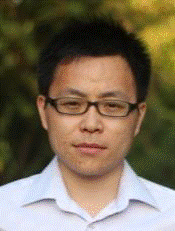发布时间:2014-05-22
题 目:Engineering thermal emission with nanostructures: thermal extraction and superradiant thermal emission
报告人:Prof. Zongfu Yu-喻宗夫(Department of Electrical and Computer Engineering,University of Wisconsin - Madison)
时 间:5月23日(周五),上午10:30-11:30
地 点:南校区第一实验楼423会议室

报告摘要:
The control of thermal radiation is of great current importance for applications such as energy conversions and radiative cooling. Here we show theoretically that the thermal emission of a finite-size blackbody emitter can be enhanced in a thermal extraction scheme, where one places the emitter in optical contact with an extraction device consisting of a transparent object, as long as both the emitter and the extraction device have an internal density of state higher than vacuum, and the extraction device has an area larger than the emitter and moreover has a geometry that enables light extraction. As an experimental demonstration of the thermal extraction scheme, we observe a four-fold enhancement of the far-field thermal emission of a carbon-black emitter having an emissivity of 0.85.
The second part of the talk focuses on superradiant thermal emission. The superradiant state reduces the lifetime of a collection of excited atom, which leads to enhanced spontaneous emission that scales as N 2with the number of emitters N. Superradiant emission will be discussed for thermal emitters consisting of optical nanoresonators. In contrast to excited quantum emitters, the superradiant state decreases the emission power from thermal emitters, by a factor as much as 1/N. The suppressed emission is caused by the reduced lifetime of nanoresonators as a result of the superradiant in-phase oscillation of thermal emitters.
个人简介:
Zongfu Yu is an assistant professor in the department of electrical and computer engineering at University of Wisconsin – Madison. Dr. Yu works on theoretical and numerical modeling of photonic devices in applications such as solar energy conversion, imaging and sensing, and integrated optical communication. Dr. Yu is a recipient of the Stanford University Postdoc Research Award in 2010. He received a Ph.D. degree in Applied Physics in 2009 and a M.S. degree in Management Science and Engineering in 2008, both from Stanford University. He received his B.S. in Physics in 2004 from the University of Science and Technology of China.